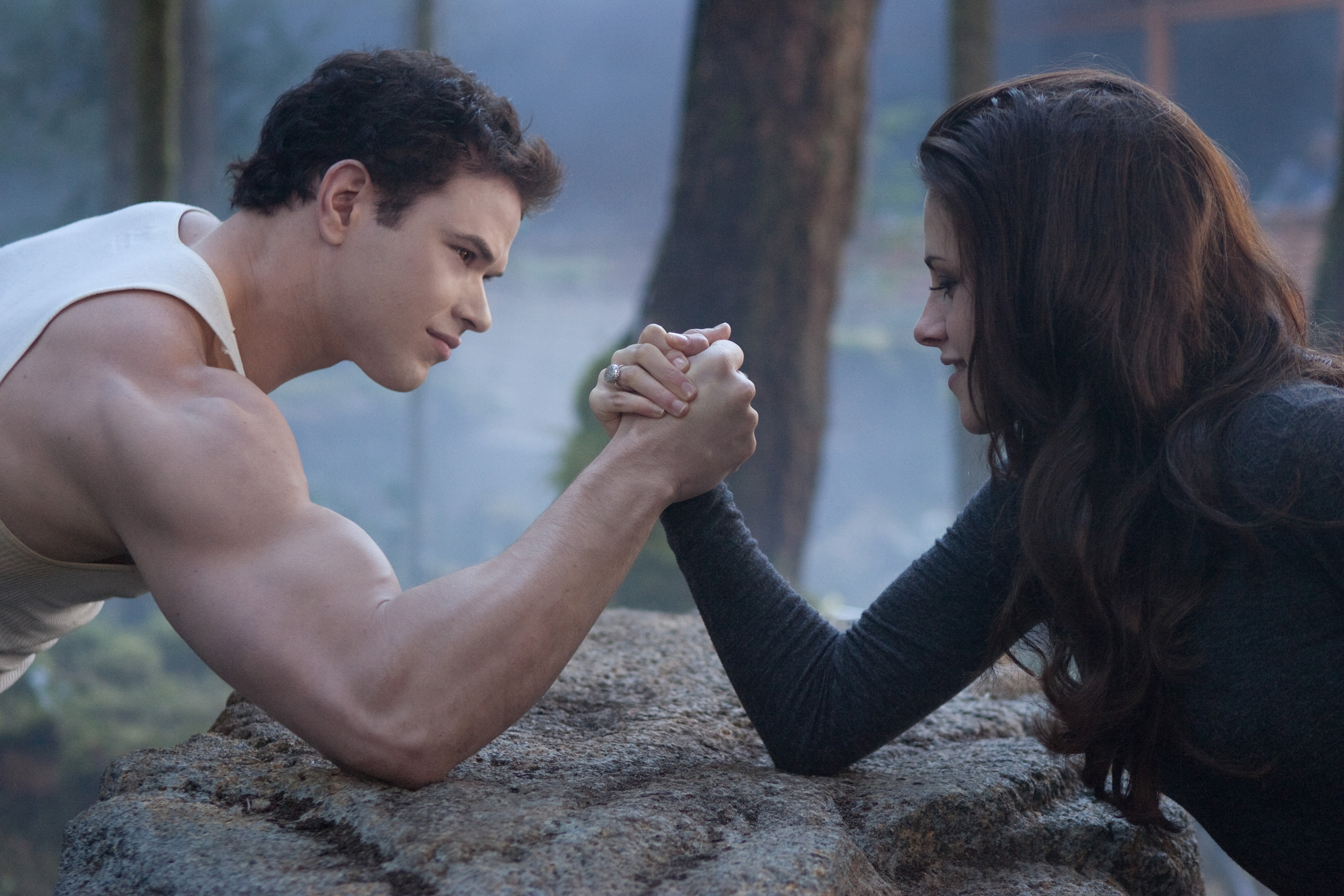The Twilight Saga: Breaking Dawn—Part 2, the conclusion to the popular vampire franchise, is a good movie. Not great—this is Twilight we’re talking about—but good. Yes, I’m just as surprised as you are.
The final Twilight film, directed by Bill Condon, is by far the best of the series. It’s also a vast improvement over Stephenie Meyer’s source material, a counteraction of Breaking Dawn’s cavernous flaw: the total lack of action.
The film opens with Bella (Kristen Stewart) reawakening as a vampire. As if by magic, or at least a transmogrifying venom, the franchise receives new life as well. As Bella says, she was “born to be a vampire.”
Kristen Stewart, at long last, emotes. She loves vamp husband Edward (Robert Pattinson) and newborn half-human, half-vampire daughter Renesmee. But beyond this, Stewart shows off a veritable flush of emotions—rage, pride, happiness—and they suit her.
Viewers also get the benefit of Bella-vision, the hyper-detailed view of the world through her supernatural eyes. Breaking Dawn amplifies what is, perhaps, the only strong feature of the saga: the visuals. The opening credits mingle enchanting and ominous images of evergreen, snow, and blood. Even the special effects, save for one uncanny and nightmarish CGI baby, are stunning.
Breaking Dawn–Part 2, deals with the ludicrous parts of Part 1 quickly. Yes, Bella and Edward have a too-perfect, half-vampire baby with a laughable name; and yes, third wheel werewolf Jacob (Taylor Lautner) falls in love with said baby. Got it.
Danger arrives when the vampire mafia, the Volturi, assume Renesmee is an immortal child, a kid-turned-vampire capable of wiping out scores of people. They plan to kill her, so the Cullens set out over the world to amass vampire friends who will stand and fight. A good deal of the film features a parade of these international characters, who, though two-dimensional, help spice up the languid and brooding cast.
This said, there are holes in the already thin story line: a forgotten spy subplot, the unexplained origin of Bella’s vampire superpower, and the arbitrary timing of it all. Why do the Volturi give them ample time to prepare?
But with a couple of clever twists, Breaking Dawn has viewers in its fangs, and the film culminates in a cathartic bloodbath: complete with an operatic score, hellfire frame supernatural fisticuffs, slow motion duels, and faces torn in half. It’s a riveting action sequence, shocking for fans, and devilishly pleasing for those hoping for a Shakespearian level of gore to atone for all things Twilight.
Breaking Dawn—Part 2 wraps up the Twilight Saga with its strongest entry. The acting, art direction, and screenplay are at their apex. Of course, this may not be saying much. Still, the final Twilight film will certainly please fans, and perhaps even manage to entertain those who were dragged to it against their will.
Breaking Dawn—Part 2 is worth a watch for the visuals and action alone. Twilight ends with a film that at last has some bite to back up its bark.







